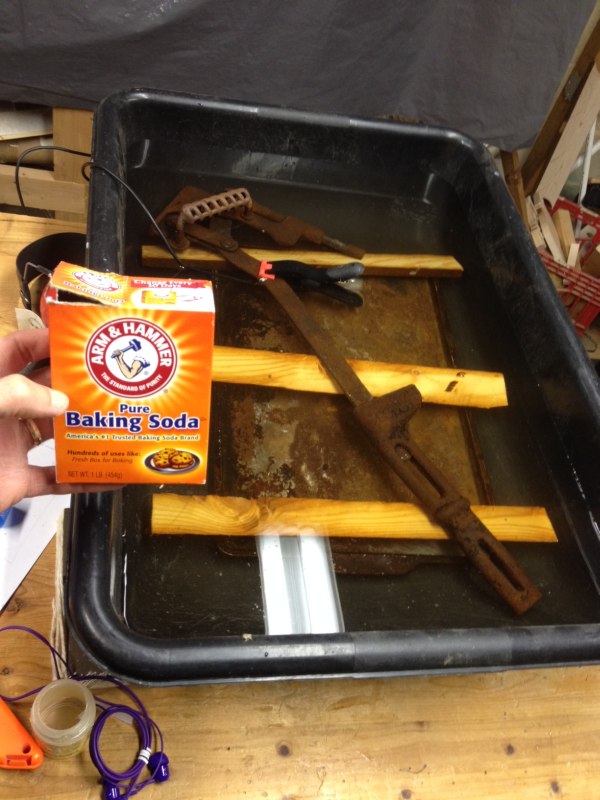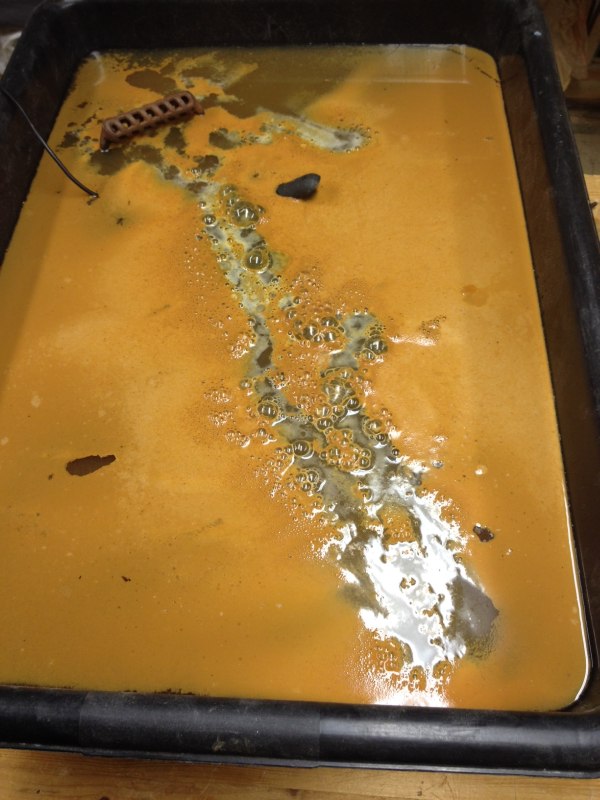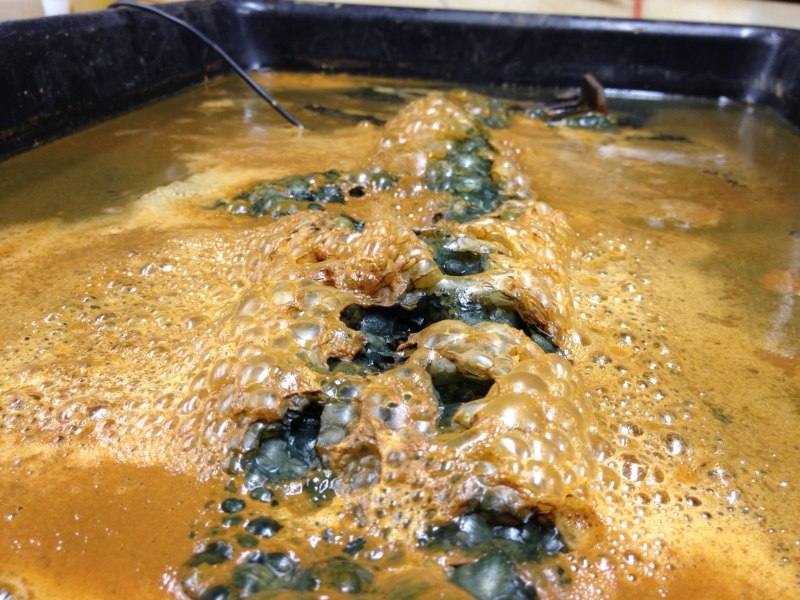
The cookie sheet was in a big plastic pan, and I covered that with three strips of wood, because for the electrolysis to work, the tool can't touch the sacrificial metal, otherwise the electric current will just go metal to metal instead of through the solution.
I poured five gallons of water over the tool, and added 5 tablespoons of baking soda to act as an electrolyte. Most instructions on the web say to use washing soda, but baking soda works just as well and is something I had on hand.
I had clamped the negative wire to the tool so there was a good electrical connection.
When I plugged the laptop charger in. the water started looking a little cloudy around the tool near the wire.

After a couple minutes bubbles started appearing.
After 30 minutes there was a rusty scum forming on top.

And after a couple hours, the rusty scum was really thick. Now you probably remember from your high school chemistry that water is made of oxygen and hydrogen, and when you run electricity through water, it splits the hydrogen and oxygen apart. So a byproduct of this process is flammable gas bubbles surrounded by pure oxygen bubbles. Sounds scary to me. Many sites say to only do this stuff outside. But I tried setting the bubbles on fire with a match, and they wouldn't burn. I fired up a propane torch and held the flame against the bubbles and instead of a big fire ball like I was expecting, there was only a little sputtering. So I think it's safe to do this in the house for a couple hours at a time. I wouldn’t leave it for days and walk away, but a few hours is fine. It's definitely flammable though.
